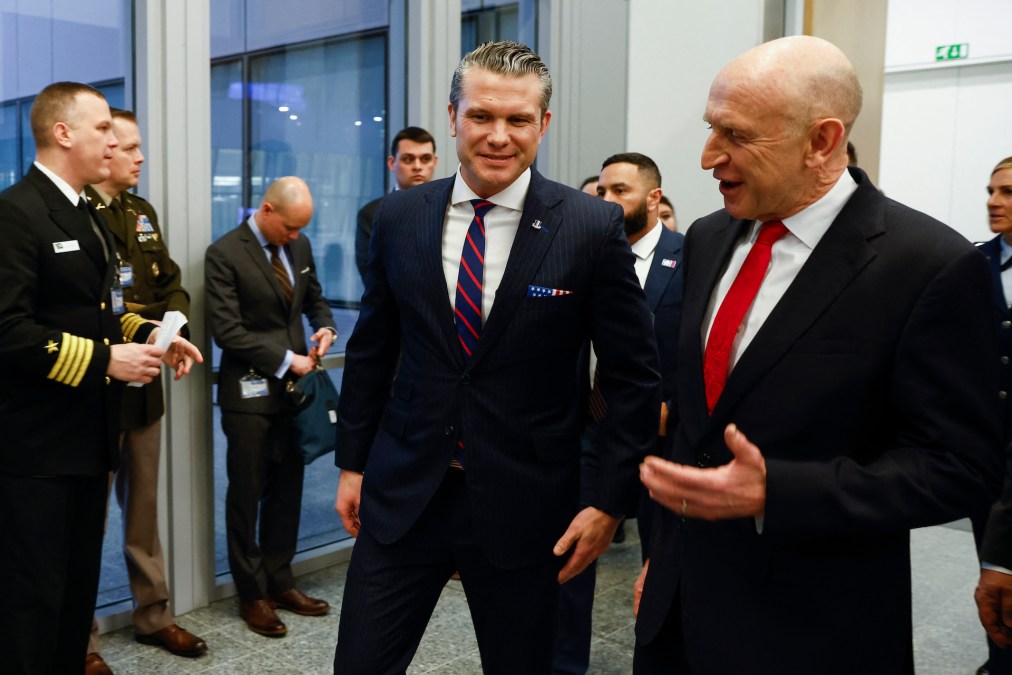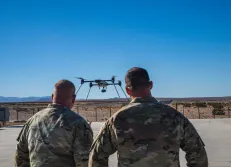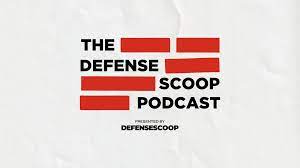Hegseth puts onus on allies to provide ‘overwhelming share’ of weapons to Ukraine

U.S. Secretary of Defense Pete Hegseth told European allies Wednesday that the Trump administration expects them to shoulder the burden of providing the “overwhelming share” of lethal and non-lethal military aid to Ukraine going forward.
The new Pentagon chief, who is in the middle of his first overseas trip in that capacity, laid out his vision for a “division of labor” for security on the continent during a meeting of the Ukraine Defense Contact Group in Brussels, Belgium.
During the Biden administration, the United States provided more than $65 billion in security assistance to Ukraine, including a variety of drones, counter-drone systems and other tools, according to the Pentagon. The European Union and its member states have provided Kyiv more than $48 billion in military assistance, according to a Congressional Research Service report that was updated last month.
“Europe must provide the overwhelming share of future lethal and non-lethal aid to Ukraine. Members of this contact group must meet the moment. This means donating more ammunition and equipment, leveraging comparative advantages, expanding your defense industrial base, and importantly, leveling with your citizens about the threat facing Europe,” Hegseth said, reiterating President Donald Trump’s call for other NATO members to spend at least 5 percent of their GDP on defense.
He noted that many European countries are already co-leading “capability coalitions” to assist Kyiv, with groups focusing on eight technology buckets including drones, air-and-missile defense, information technology, air force, maritime security, artillery, armor and de-mining.
“These groups are doing great work to coordinate Europe’s contributions of … assistance across eight key capability areas. These are first steps. More must still be done. We ask each of your countries to step up on fulfilling the commitments that you have made, and we challenge your countries and your citizens to double down and recommit yourselves, not only to Ukraine’s immediate security needs, but to Europe’s long-term defense and deterrence goals,” Hegseth said.
The Trump administration wants to see a quick end to the war and the preservation of Ukrainian sovereignty, but it doesn’t intend to send American troops to Ukraine as part of a peacekeeping force or security guarantor following a diplomatic settlement to the Ukraine-Russia war, he noted, adding that NATO membership for Ukraine and a return to pre-2014 borders are “unrealistic” objectives for a negotiated deal to end the conflict.
“Our transatlantic alliance has endured for decades, and we fully expect that it will be sustained for generations to come. But … it will require our European allies to step into the arena and take ownership of conventional security on the continent. The United States remains committed to the NATO alliance and to the defense partnership with Europe — full stop — but the United States will no longer tolerate an imbalanced relationship … which encourages dependency, rather our relationship will prioritize empowering Europe to own responsibility for its own security,” he added.
According to Hegseth, “stark strategic realities” will compel the U.S. to focus more on other areas of the world.
“The United States faces consequential threats to our homeland. We must and we are focusing on security of our own borders. We also face a peer competitor in the communist Chinese with the capability and intent to threaten our homeland and core national interests in the Indo-Pacific. The U.S. is prioritizing deterring war with China in the Pacific, recognizing the reality of scarcity and making the resourcing tradeoffs to ensure deterrence does not fail,” he said. “As the United States prioritizes its attention to the threats, European allies must lead from the front. Together, we can establish a division of labor that maximizes our comparative advantages in Europe and Pacific, respectively.”






